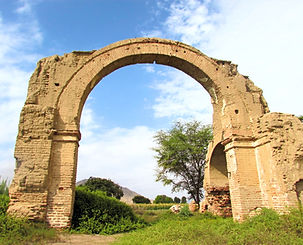
Zaña Colonial Archaeology Project, Zaña, Peru
Zooarchaeology in Zaña, Peru
2012-Present
I began work on the Zaña Colonial Archaeology Project (PAZC) as a MA student in zooarchaeology at the University of Florida. Project director Dr. Parker VanValkenburgh kindly welcomed me to the project team and I analyzed zooarchaeological material from pre-Columbian and colonial deposits for my MA thesis. To date, our work has analyzed over 38,000 vertebrate remains!

Archaeologist and PAZC team member Sarita Fuentes Villalobos examines a small fish vertebra from the colonial settlement of Carrizales. Photograph by Sarah Kennedy.
Inside the Reducción
Crafting Colonial Foodways at Carrizales and Mocupe Viejo, Zaña Valley
This study explores the politics of indigenous foodways in early colonial Peru, examining the processes by which indigenous households adapted to demographic stress, resettlement, and evangelization in the sixteenth and seventeenth centuries CE.
We examine faunal and botanical data from two planned towns (reducciones) located in Peru’s Zaña Valley—Carrizales and Mocupe Viejo. Inter- and intra-site comparison of food procurement and diet reveal different strategies and timing in the ways that Eurasian products were incorporated into native foodways, suggesting that while Old World animal domesticates were rapidly integrated into the indigenous diet, plant domesticates tied to the Iberian palate were not as readily adopted.
Zooarchaeology and Changing Food Practices
At Carrizales, Peru Following the Spanish Invasion
Through analysis of zooarchaeological remains from two occupations at the site of Carrizales, we examine how an indigenous Peruvian maritime community responded to imperial interventions in their daily lives in the late sixteenth century.
Following their forced resettlement into a planned reducción village, and amidst demographic decline and tribute extraction, Carrizales’s residents significantly changed how they put food on the table, pursuing less time-intensive strategies of food collec- tion and incorporating Eurasian animals into their diets.
These results illustrate the dynamism of relations between imperial political economies and domestic life and the efficacy of indigenous survival strategies.






